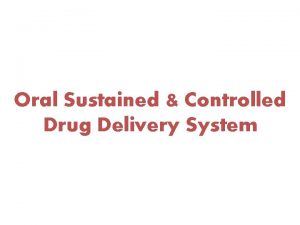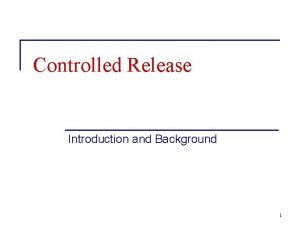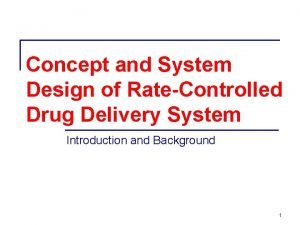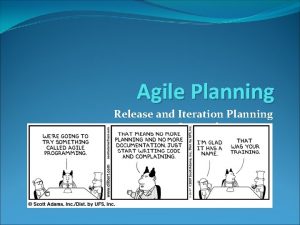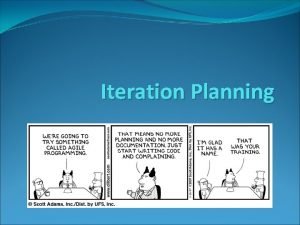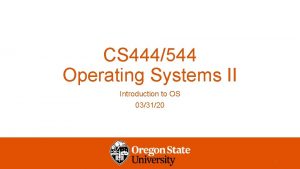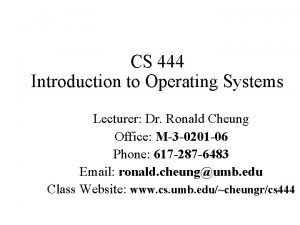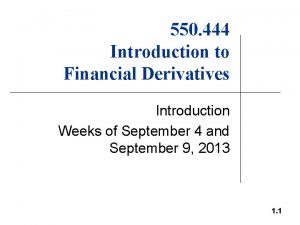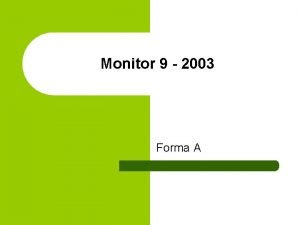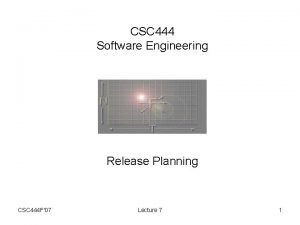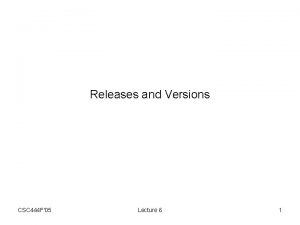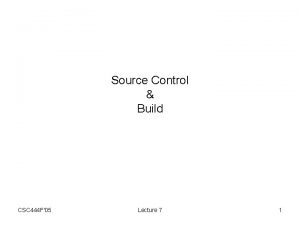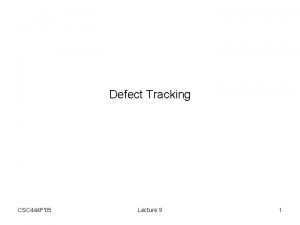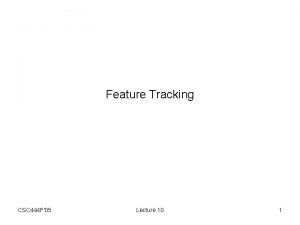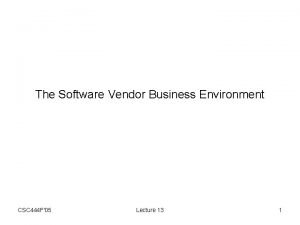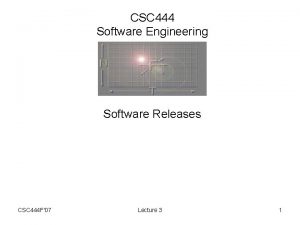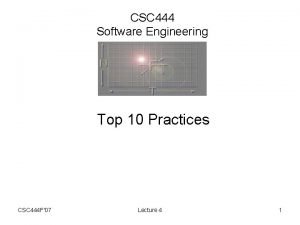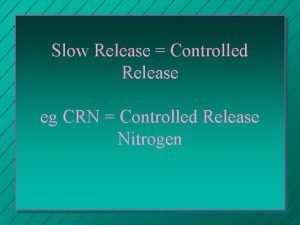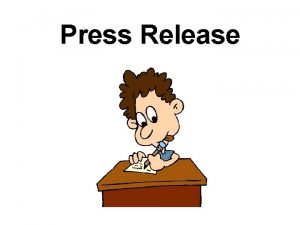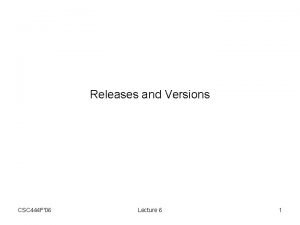Release Planning Methodology Overview CSC 444 F05 Lecture

















- Slides: 17

Release Planning Methodology Overview CSC 444 F'05 Lecture 3 1

Release Planning Framework • Provide a software release planning framework – that balances • business concerns • software development concerns – provides better predictability of • end-date • delivered debugged feature set – provides early notification of slips – allows for re-planning as events unfold – deals explicitly with uncertainty CSC 444 F'05 Lecture 3 2

The Product Lifecycle CSC 444 F'05 Lecture 3 3

Follow on Lifecycles CSC 444 F'05 Lecture 3 4

Eliciting Potential Requirements ? Potential Requirements Next Release • Starts with a wish list • Stated as business requirements – Features or architectural enhancements CSC 444 F'05 Lecture 3 5

Sizing Potential Requirements • Cost / Benefit analysis – Cost: financial + opportunity = person days • Sizing in ECDs – Inherent size of the work item – Who will work on it – The productivity of that person on that work item • Ensure units are well-understood (more later) CSC 444 F'05 Lecture 3 6

Sizing the Available Resources • Who can work on the next release? – Must have skills and familiarity to contribute • For how long? – Must count workdays in the coding phase – Each resource available all that time? – Subtract estimated vacation • How dedicated to the next release – Work factor = w – Converts 8 -hour (nominal, arbitrary) days to time available to code and unit test during the coding phase – E. g. w=0. 6 means can dedicate 0. 6 x 8 = 4. 8 hours/workday – Accounts for • Other tasks, sickdays, meetings, weekends, . . . – Range is 0. . 9, usually 0. 6 or so CSC 444 F'05 Lecture 3 7

The Capacity Constraint • After all is done in a release Actual Resource Used == Sum of Actual Times for Features • This is always true. It is a constraint. • In planning, knowing that this must work out at the end, can estimate both sides and force the estimates to be equal Resource Estimate == Sum of Feature Estimates CSC 444 F'05 Lecture 3 8

A Geometric Analogy - Capacity p e r s o n s 1 person-day days CSC 444 F'05 Lecture 3 9

A Geometric Analogy - Requirement CSC 444 F'05 Lecture 3 10

A Geometric Analogy - Capacity Constraint CSC 444 F'05 Lecture 3 11

A Simple Release Plan Dates: Coding phase: Jul. 1—Oct. 1 Beta availability: Nov. 1 General availability: Dec. 1 Capacity: CSC 444 F'05 Fred Lorna … Bill total days available 31 ecd 33 ecd … 21 ecd 317 ecd Requirement: AR report Dialog re-design … Thread support total days required 14 ecd 22 ecd … 87 ecd 317 ecd Status: 317 effective coder-days 0 effective coder days Capacity: Requirement: Delta: Lecture 3 12

Non-Coding Time and Resource • In RP, we explicitly plan coding only. – Other • types of resources: – Testers, documenters, managers • phases: – Specification, testing – These are sized relative to the coding phase and the coding resource • Why? – Debugged code is the ultimate target • Can’t be 90% done on that and still ship intended feature set – How much time to devote to documentation? – How much time to devote to testing? – When is enough, enough? • How? – – – Establish ratios Measure what works for ratios for a given product Adjust next time around Converges rapidly Initial guess is usually pretty good CSC 444 F'05 Lecture 3 13

Resource Ratios • Typical ratios I have used • Adjust to taste • Assumes availability throughout the (overlapping) release cycle. CSC 444 F'05 Lecture 3 14

Phase Length Ratios • • Typical ratios I have used Adjust to taste CSC 444 F'05 Lecture 3 15

Release Overlap • Overlapping release cycles smoothes resource utilization CSC 444 F'05 Lecture 3 16

Shipping The Release • • After dcut, proactive management is gone. Can only watch defect arrivals and hope for the best. – If your ratios are off: forgetaboutit, CSC 444 F'05 Lecture 3 17
 Sustained release dosage form
Sustained release dosage form Extended release vs sustained release
Extended release vs sustained release Extended release vs sustained release
Extended release vs sustained release Jackson structured development
Jackson structured development Research methods notes
Research methods notes To gain familiarity with a phenomenon
To gain familiarity with a phenomenon 01:640:244 lecture notes - lecture 15: plat, idah, farad
01:640:244 lecture notes - lecture 15: plat, idah, farad 5 levels of agile planning
5 levels of agile planning What is meant by an iteration goal
What is meant by an iteration goal Enterprise resource planning overview
Enterprise resource planning overview 444 5 lecke
444 5 lecke Arti 444 555 666 888 33 88
Arti 444 555 666 888 33 88 Cs 444 oregon state
Cs 444 oregon state Cs 444
Cs 444 Introduction to engineering in society
Introduction to engineering in society 550-444
550-444 Ignatius v bell (1913) 2 fmslr 115
Ignatius v bell (1913) 2 fmslr 115 Ciferny sucet cisla 444
Ciferny sucet cisla 444
